Unconventional Energy from an Electric Impulse Heater Combined with a Wind Turbine
Abstract
:1. Introduction
2. Materials and Methods
3. Results and Discussions
4. Conclusions
- (1)
- A mathematical model of the operation of an electric pulse heater was developed, which made it possible to determine the pulse currents in the coil (imax1 = 850A), the core (imax2 = 380A), and in the screen (imax3 = 530A), as well as to develop methodological provisions for evaluating the temperature change of its elements at a random wind speed.
- (2)
- Bench experimental studies of the operation of the electric pulse heater were carried out, which confirmed the adequacy of the mathematical model for determining the currents in its constituent elements. It was established that, within an hour, the increase in the temperature of the heater core changed from 22 °C to 36 °C at a voltage of 66V and number of pulses entering the heater coil of (15–17) discharges, which corresponds to the values of the mathematical expectation of the wind speed of (4–5.2) m∙s−1 in the speed range wind (4–8) m∙s−1. The results were in satisfactory agreement with the calculated values. This model can be applied to other construction materials of the heater, which is expected in further research.
Author Contributions
Funding
Institutional Review Board Statement
Informed Consent Statement
Data Availability Statement
Conflicts of Interest
Nomenclature
| A—core wall area | m2 |
| D—outer diameter of the core or screen | m |
| L1—coil inductance | H |
| L2—inductance of the inner ferromagnetic core | H |
| L3—inductance of the outer ferromagnetic shield | H |
| M1—inductance between the coil and the inner ferromagnetic core | H |
| M2—inductance between the coil and the outer ferromagnetic shield | H |
| P—heat effect without taking into account heating losses | J |
| Q—heat flux | W |
| Qw—heat flux to the core wall | W |
| R—outer radius of the core or screen | m |
| R1—coil resistance | Ω |
| R2—resistance of the internal ferromagnetic core | Ω |
| R3—resistance of the outer ferromagnetic screen | Ω |
| Rk—key resistance | Ω |
| U—voltage | V |
| a—length of the solenoid valve | m |
| d—inner diameter of the core or screen | m |
| de—solenoid valve diameter | m |
| d1—inner core diameter | m |
| d2—outer core diameter | m |
| i—electric current | A |
| l—core or screen length | m |
| r—inner radius of the core or screen | m |
| Δ—increment | |
| Θ—thermal effect impulse | °C |
| θ—temperature | °C |
| λi—thermal conductivity of the layers forming the core walls | W∙(m·K)−1 |
| ω—number of turns of the solenoid valve |
References
- Wisniewski, R.; Daniluk, P.; Nowakowska-Krystman, A.; Kownacki, T. Critical Success Factors of the Energy Sector Security Strategy: The Case of Poland. Energies 2022, 15, 6270. [Google Scholar] [CrossRef]
- Liu, X.; Zhao, T.; Chang, C.-T.; Fu, C.-J. China’s renewable energy strategy and industrial adjustment policy. Renew. Energy 2021, 170, 1382–1395. [Google Scholar] [CrossRef]
- Doytch, N.; Narayan, S. Does Transitioning towards Renewable Energy Accelerate Economic Growth? An Analysis of Sectoral Growth for a Dynamic Panel of Countries. Energy 2021, 235, 121290. [Google Scholar] [CrossRef]
- Cole, W.; Gates, N.; Mai, T. Exploring the cost implications of increased renewable energy for the U.S. power system. Electr. J. 2021, 34, 106957. [Google Scholar] [CrossRef]
- Crijns-Graus, W.; Wild, P.; Amineh, M.P.; Hu, J.; Yue, H. International Comparison of Research and Investments in New Renewable Electricity Technologies: A Focus on the European Union and China. Energies 2022, 15, 6383. [Google Scholar] [CrossRef]
- Zagubień, A.; Wolniewicz, K. Energy Efficiency of Small Wind Turbines in an Urbanized Area—Case Studies. Energies 2022, 15, 5287. [Google Scholar] [CrossRef]
- Li, J.; Chen, S.; Wu, Y.; Wang, Q.; Liu, X.; Qi, L.; Lu, X.; Gao, L. How to make better use of intermittent and variable energy? A review of wind and photovoltaic power consumption in China. Renew. Sustain. Energy Rev. 2021, 137, 110626. [Google Scholar] [CrossRef]
- Bošnjaković, M.; Katinić, M.; Santa, R.; Marić, D. Wind Turbine Technology Trends. Appl. Sci. 2022, 12, 8653. [Google Scholar] [CrossRef]
- Sultana, U.; Aamir, M.; Irfan, M.; Fatima, M. Increase the Performance of Wind Energy Systems Using Optimal Layout Planning. Eng. Proc. 2022, 20, 20. [Google Scholar] [CrossRef]
- Ohansson, T.B.W.R.; Kelly, H.; Reddy, A.K.N. Wind energy systems renewable fuels electric a growing world econonic definition achievement potential. Energy Stud. Rev. 1993, 4, 199–212. [Google Scholar]
- Aziz, M.S.; Ahmed, S.; Saleem, U.; Muf, G.M. Wind-hybrid Power Generation System sUsing Renewable Energy Sources—A Review. Int. J. Renew. Energy Res. 2017, 7, 111–127. [Google Scholar]
- Ali, R.B.; Bouadila, S.; Arıcı, M.; Mami, A. Feasibility study of wind turbine system integrated with insulated Greenhouse: Case study in Tunisia. Sustain. Energy Technol. Assess. 2021, 47, 101333. [Google Scholar]
- Hussain, M.N.; Shaukat, N.; Ahmad, A.; Abid, M.; Hashmi, A.; Rajabi, Z.; Tariq, M.A.U.R. Micro-Siting of Wind Turbines in an Optimal Wind Farm Area Using Teaching–Learning-Based Optimization Technique. Sustainability 2022, 14, 8846. [Google Scholar] [CrossRef]
- Dhont, M.; Tsiporkova, E.; Boeva, V. Advanced Discretisation and Visualisation Methods for Performance Profiling of Wind Turbines. Energies 2021, 14, 6216. [Google Scholar] [CrossRef]
- Mohan Kumar, P.; Sivalingam, K.; Lim, T.-C.; Ramakrishna, S.; Wei, H. Strategies for Enhancing the Low Wind Speed Performance of H-Darrieus Wind Turbine—Part 1. Clean Technol. 2019, 1, 185–204. [Google Scholar] [CrossRef] [Green Version]
- Qihui, Y.; Tian, L.; Li, X.; Tan, X. Compressed Air Energy Storage Capacity Configuration and Economic Evaluation Considering the Uncertainty of Wind Energy. Energies 2022, 15, 4637. [Google Scholar] [CrossRef]
- Profaiser, A.; Saw, W.; Nathan, G.J.; Ingenhoven, P. Bottom-Up Estimates of the Cost of Supplying High-Temperature Industrial Process Heat from Intermittent Renewable Electricity and Thermal Energy Storage in Australia. Processes 2022, 10, 1070. [Google Scholar] [CrossRef]
- Holovko, V.; Kohanevich, V.; Shikhailov, M.; Sukmaniuk, O.; Kukharets, S. Theoretical Investigation Of Heat Production Feasibility By Means Of Wind Mechanical Plants. INMATEH-Agric. Eng. 2021, 65, 355–361. [Google Scholar]
- Niu, B.; Hwangbo, H.; Zeng, L.; Ding, Y. Evaluation of alternative power production efficiency metrics for offshore wind turbines and farms. Renew. Energy 2018, 128 Part A, 81–90. [Google Scholar] [CrossRef]
- Mohammadi, A.; Ahmadi, M.H.; Bidi, M.; Joda, F.; Valero, A.; Uson, S. Exergy analysis of a Combined Cooling, Heating and Power system integrated with wind turbine and compressed air energy storage system. Energy Convers. Manag. 2017, 131, 69–78. [Google Scholar] [CrossRef]
- Jha, D.; Thakur, A. A Comprehensive Review on Wind Energy System for Electric Power Generation: Current Situation and Improved Technologies to Realize Future Development. Int. J. Renew. Energy Res. 2017, 7, 1786–1805. [Google Scholar]
- Zwarteveen, J.W.; Figueira, C.; Zawwar, I.; Angus, A. Barriers and drivers of the global imbalance of wind energy diffusion: A meta-analysis from a wind power Original Equipment Manufacturer perspective. J. Clean. Prod. 2020, 290, 125636. [Google Scholar] [CrossRef]
- Vasilyev, V.A. The Analysis of Application Possibility of the Capacitor Energy Storing Devices on the Electric Rolling Stock. Proc. Petersburg Transp. Univ. 2011, 1, 35–44. [Google Scholar]
- Didenco, E. Soldering Iron Based on a Pulse Converter. 2007. Available online: https://www.rlocman.ru/shem/schematics.html?di=28463 (accessed on 2 November 2022).
- Pulse Power Source (PIP) Principle of Operation, Device. 2022. Available online: https://tukles.biz.ua/impulsnij-dzherelo-zhivlennja-pip-princip-dii/ (accessed on 2 November 2022).
- Kalantarov, P.L.; Zeitlin, L.A. Calculation of inductances: Reference book-L.: Energoatomizdat. 1986, p. 488. Available online: http://www.radioscanner.ru (accessed on 2 November 2022).
- Nashchokin, V.V. Technical thermodynamics and heat transfer. M. High. Sch. 1980, 469. Available online: https://www.semanticscholar.org/paper/Engineering-Thermodynamics-and-Heat-Transfer-Nashchokin/7f9b6d4167789bb63f26b4cc56710d9f786024ee (accessed on 2 November 2022).
- Holovko, V.; Kokhanievych, V.; Shykhailov, M.; Donets, A.; Percova, I. Immediative model of the charging process of the emcsential accumulator of the elektrodynamik driver pump in alone state windturbine. Vidnovluvana Energ. 2019, 1, 51–60. [Google Scholar] [CrossRef] [Green Version]
- Jiao, P.; Matin Nazar, A.; Egbe, K.-J.I.; Barri, K.; Alavi, A.H. Magnetic capsulate triboelectric nanogenerators. Sci. Rep. 2022, 12, 89. [Google Scholar] [CrossRef] [PubMed]


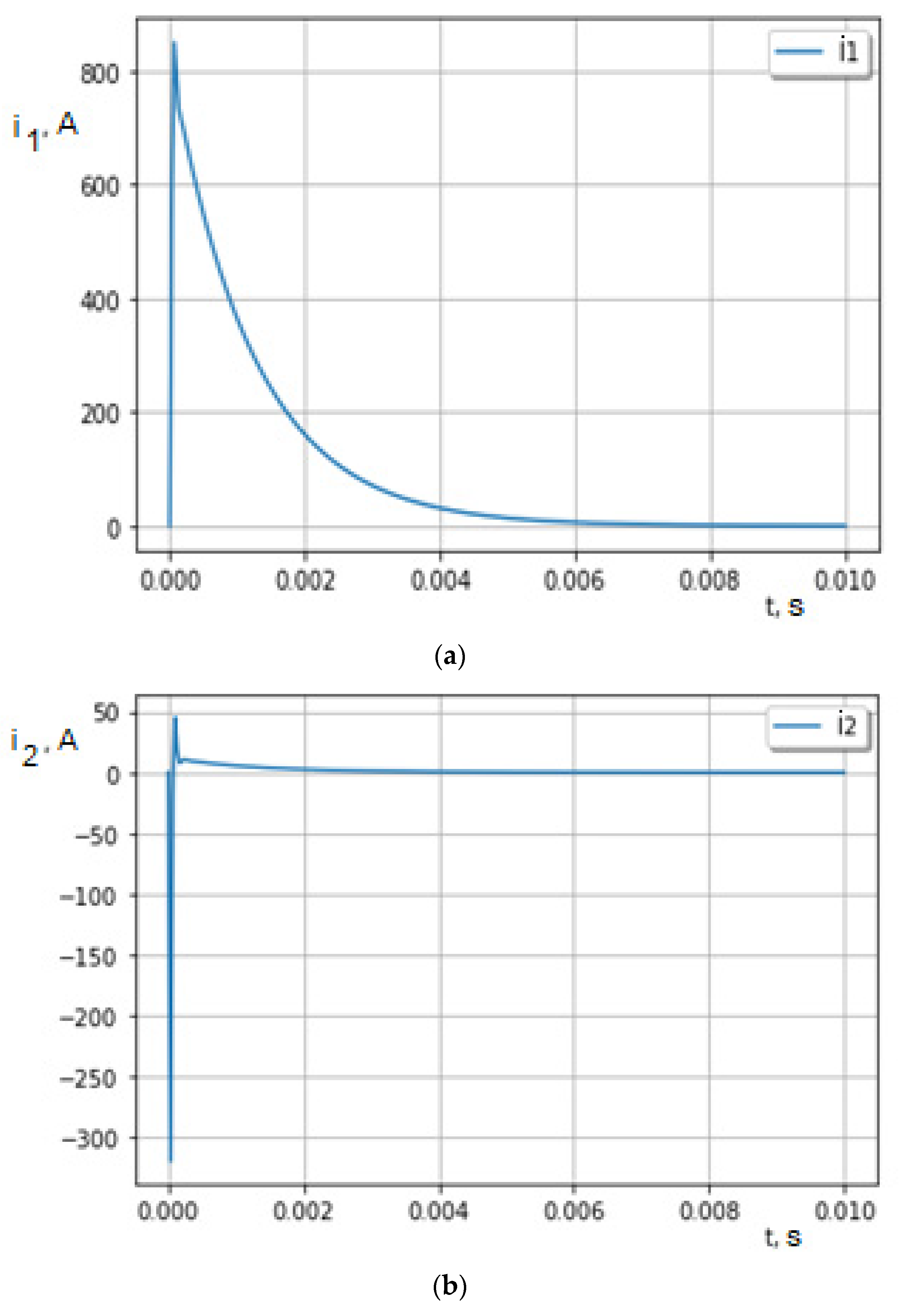
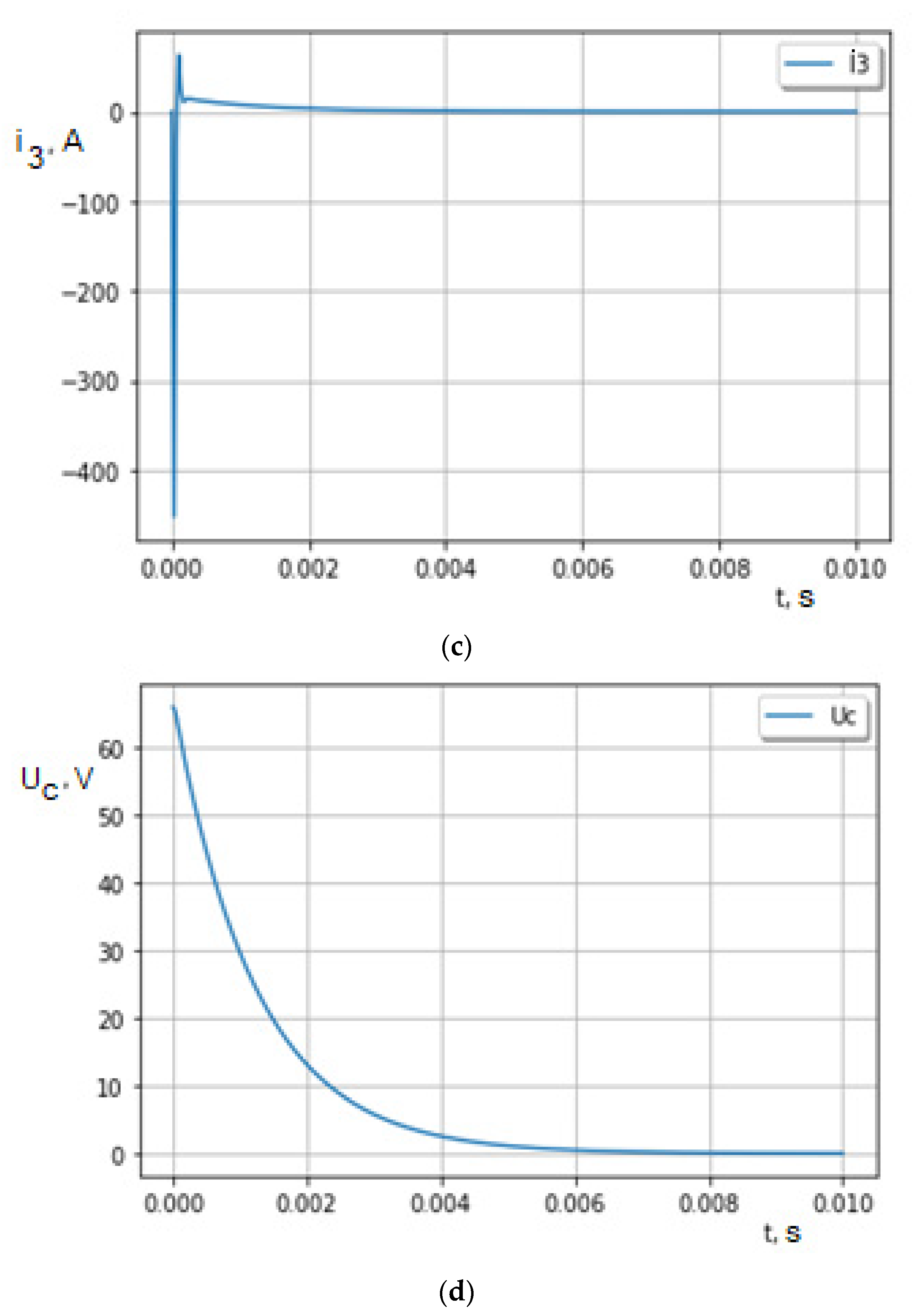
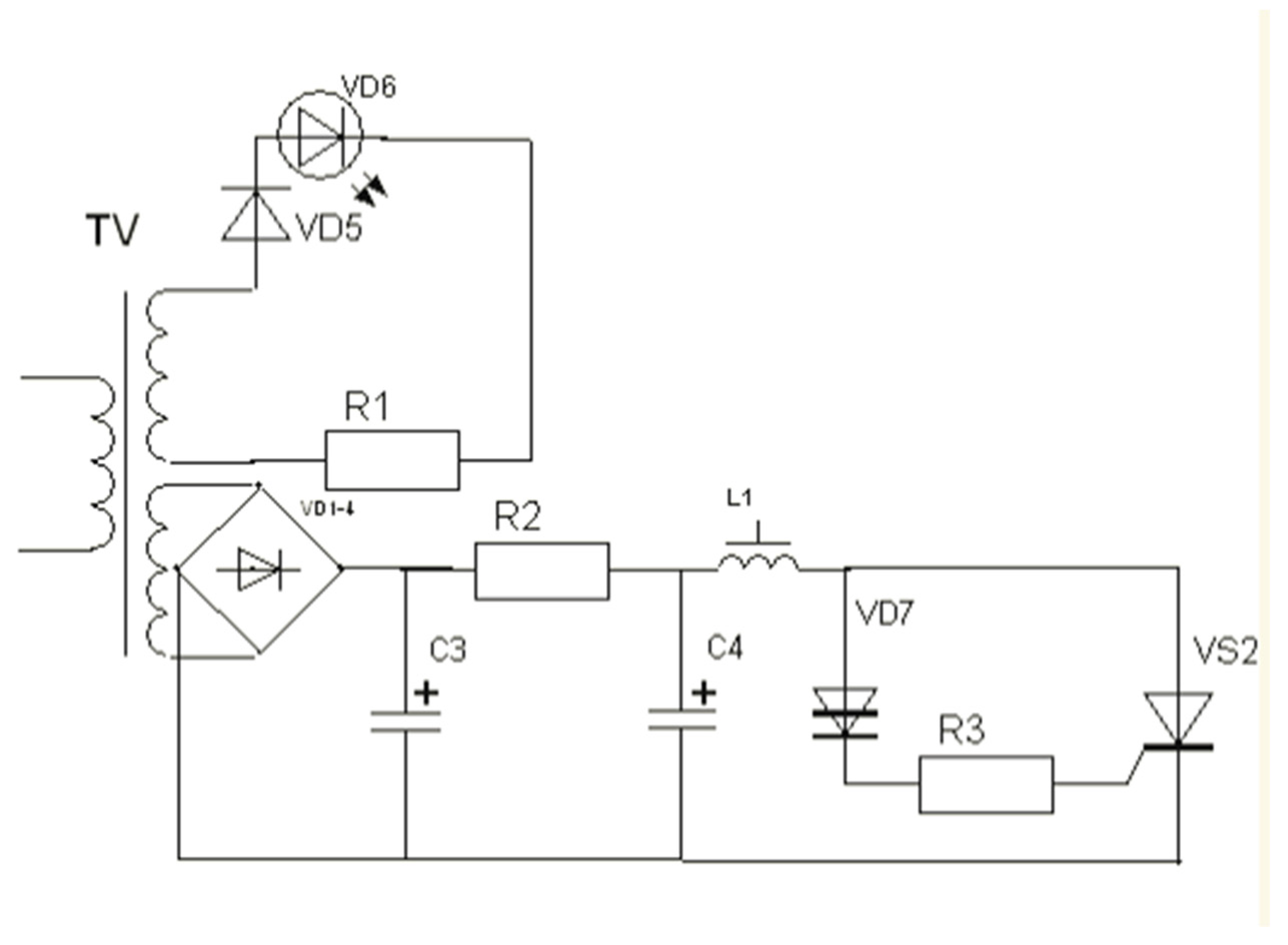
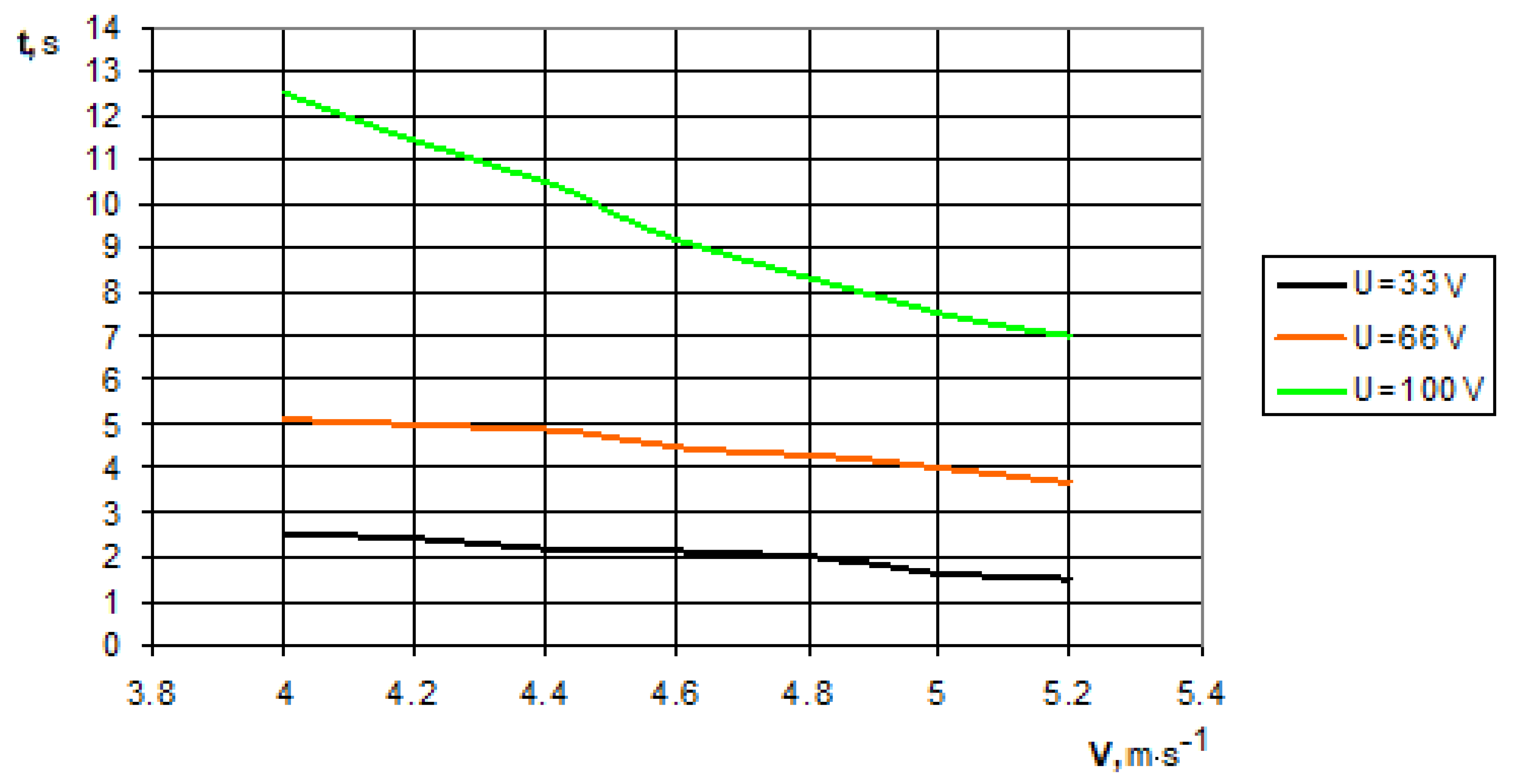
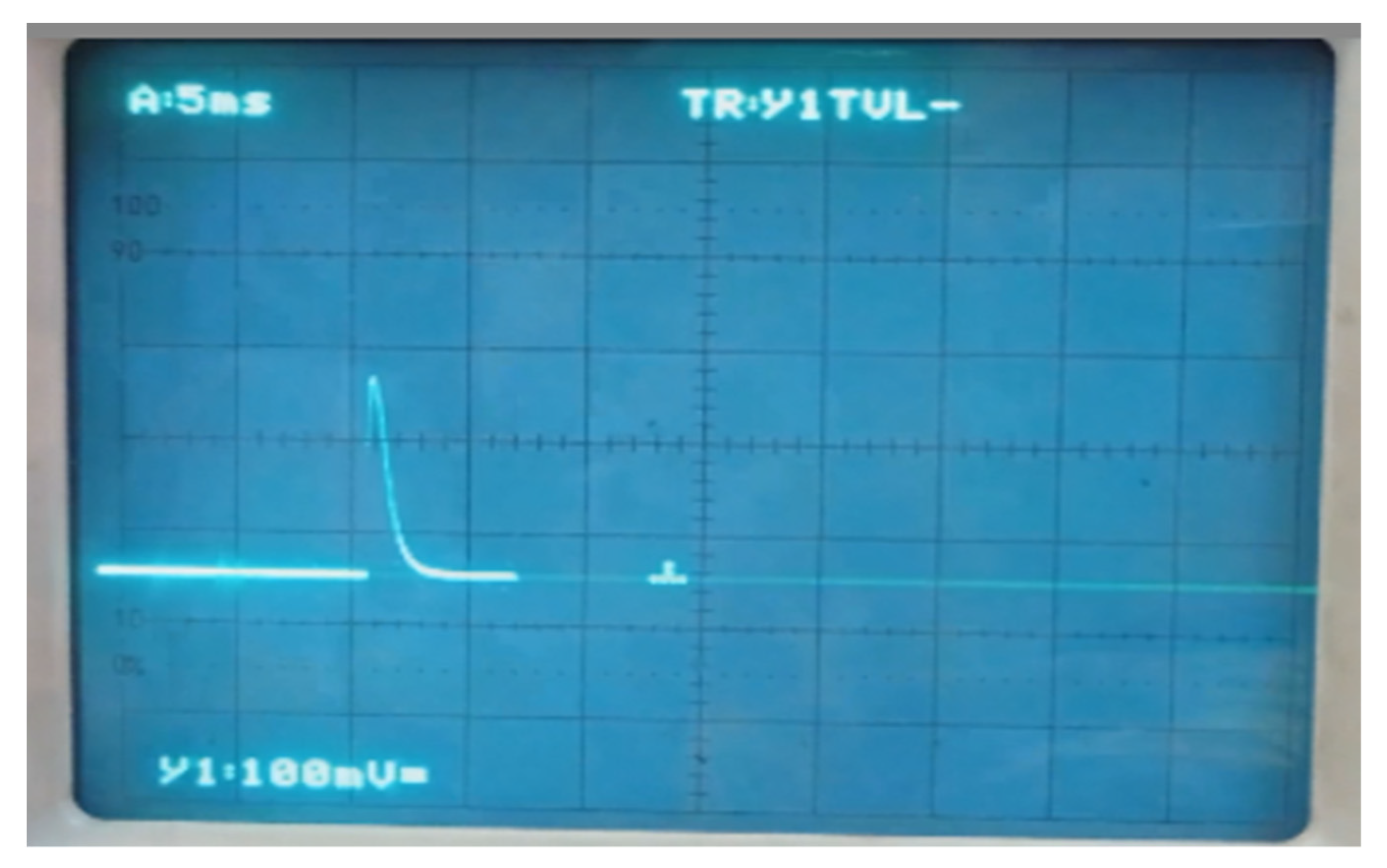

Publisher’s Note: MDPI stays neutral with regard to jurisdictional claims in published maps and institutional affiliations. |
© 2022 by the authors. Licensee MDPI, Basel, Switzerland. This article is an open access article distributed under the terms and conditions of the Creative Commons Attribution (CC BY) license (https://creativecommons.org/licenses/by/4.0/).
Share and Cite
Holovko, V.; Kohanevich, V.; Shikhailov, M.; Donets, A.; Maksymeniuk, M.; Sukmaniuk, O.; Kukharets, S.; Konieczny, R.; Koniuszy, A.; Dybek, B.; et al. Unconventional Energy from an Electric Impulse Heater Combined with a Wind Turbine. Energies 2022, 15, 8863. https://doi.org/10.3390/en15238863
Holovko V, Kohanevich V, Shikhailov M, Donets A, Maksymeniuk M, Sukmaniuk O, Kukharets S, Konieczny R, Koniuszy A, Dybek B, et al. Unconventional Energy from an Electric Impulse Heater Combined with a Wind Turbine. Energies. 2022; 15(23):8863. https://doi.org/10.3390/en15238863
Chicago/Turabian StyleHolovko, Volodimir, Volodimir Kohanevich, Mikola Shikhailov, Artem Donets, Mihailo Maksymeniuk, Olena Sukmaniuk, Savelii Kukharets, Ryszard Konieczny, Adam Koniuszy, Barbara Dybek, and et al. 2022. "Unconventional Energy from an Electric Impulse Heater Combined with a Wind Turbine" Energies 15, no. 23: 8863. https://doi.org/10.3390/en15238863






